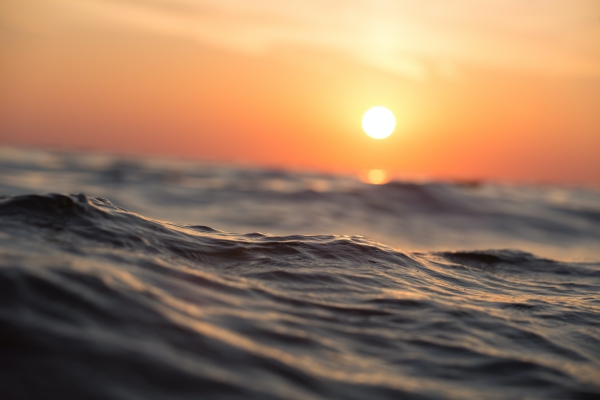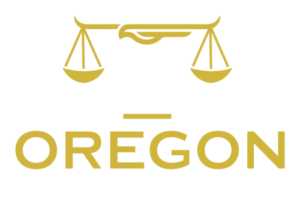Protecting Oregon’s Beaches: Understanding the Public Trust
Doctrine

The Public Trust doctrine is a legal concept that imposes duties on government to protect natural resources such as waterways, wildlife, and land. These duties are imposed because, under the doctrine, the public is considered the owner of natural resources. The government, as trustee, must protect and maintain the natural resources for public use. Under the Public Trust doctrine, citizens are given a right—a legal mechanism to seek judicial enforcement—to review government actions that might pose a breach to the duties imposed. So, if the government does not adequately protect natural resources or deny public access to natural resources, the public can sue the government under the doctrine. Most often, the doctrine is triggered in the context of waterways such as streams, lakes, and
oceans. This context also includes not only the physical navigable bodies of water but also the lands necessary to access these waterways. Because the Public Trust doctrine includes lands necessary to access waterways, the doctrine can prevent private property owners from extending their land to the water’s edge. This can include the banks of streams, the beaches of oceans, and the shoreline of lakes.
How Has the Public Trust Applied to Oregon?
In Oregon, the Public Trust doctrine is embodied in landmark legislation passed in July 1967. This legislation guaranteed the public unrestricted beach access along Oregon’s coast. Under this legislation, called the Oregon Beach Bill, Oregon’s beaches are protected for over 12 vertical feet above the low tide mark. This protection also prevents development, and any privatization that would prohibit public access to beaches.
The Oregon Beach Bill grants public easements across private land easements allow the public uninterrupted access to all of Oregon’s beaches for access and recreation. This access is limited by the line of vegetation or, lands lying above the elevation where flooding naturally occurs. The public easements enforced by the Oregon Beach Bill also mean that, in order for property owners to build on or use the ocean shore, they must apply for state permits. A local example of the Public Trust in Oregon is current litigation surrounding access to Lake Oswego. This litigation centers on whether a regulation passed by the Lake Oswego City Council can restrict the public from accessing the waters of the lake. The waters of Lake Oswego are surrounded by private property owners. Use of the lake is restricted to these property owners and residents of the Lake Oswego community. The general public is prohibited from accessing the lake from shoreline public parks.
In this on-going case, the question is whether the city’s restriction on the public entering Lake Oswego unreasonably interferes with the public’s right to enter the lake from waterfront parks. This litigation began in 2012 and a final resolution directly calls into focus the public’s right under the Public Trust doctrine.
Back in April 2012, a resolution passed by the Lake Oswego City Council banned the public from entering the lake from shoreline parks. Signs posted by city staff prohibited access from these parks to the lake. Two individuals challenged the city’s rules arguing that navigable waterways, such as Lake Oswego, must be accessible from public land such as the shoreline parks. An original ruling in 2012 on the matter was appealed to the Supreme Court. In 2019, the Supreme Court ruled to remand, or return, the case to the lower court. The lower court in this instance is the Clackamas County Circuit Court before Judge Ann Lininger. On return to the lower court for further proceedings to develop the factual record, additional instructions were given. The Supreme Court instructed the Circuit Court to answer the question of whether the lake is subject to the trust. In April 2022, Judge Lininger ruled that Lake Oswego is in fact subject to the Public Trust doctrine and, despite that fact, “the lake has been functionally privatized.” A final hearing, to determine whether the city’s restriction violates the public trust, is set for hearing this month.
The Human Access Project: Furthering Access to Oregon
Waterways
The nonprofit organization Human Access Project (HAP) was founded in November 2010 by Willie Levenson. Levenson simply wanted his community to enjoy their Willamette River and, in the years since its founding, HAP has strived to revamp the negative stigma of the Willamette. Since the completion of the Big Pipe project in 2011 that eliminated sewage overflow into the Willamette, the mission of HAP is simple. Levenson and his team use grassroots advocacy to help people “get into their river.” In service of this mission HAP’s creates awareness campaigns to help prove to the Willamette River community that their river is safe to enjoy. One such campaign that launched in 2011, was the first Big Float on the Willamette River. Over 1,200 participants suited up for a leisurely day of enjoyment and relaxation on their beloved waterway. Now, 2 years after the effects of the pandemic, the Big Float has returned as is as strong as ever with over 4,000 participants.
Levenson also wants to create awareness that the Willamette is worth protecting. In addition to the Big Float, HAP is involved with goals such as replacing swimming docks at multiple public beaches, creating a new access point on the Willamette to coincide with the Burnside Bridge replacement, and developing awareness to address the harmful algae bloom. Levenson believes that HAP is all about cultural change and wants Portlanders to love with their river. Changing the way his city engages with the Willamette is a vehicle for that change.
